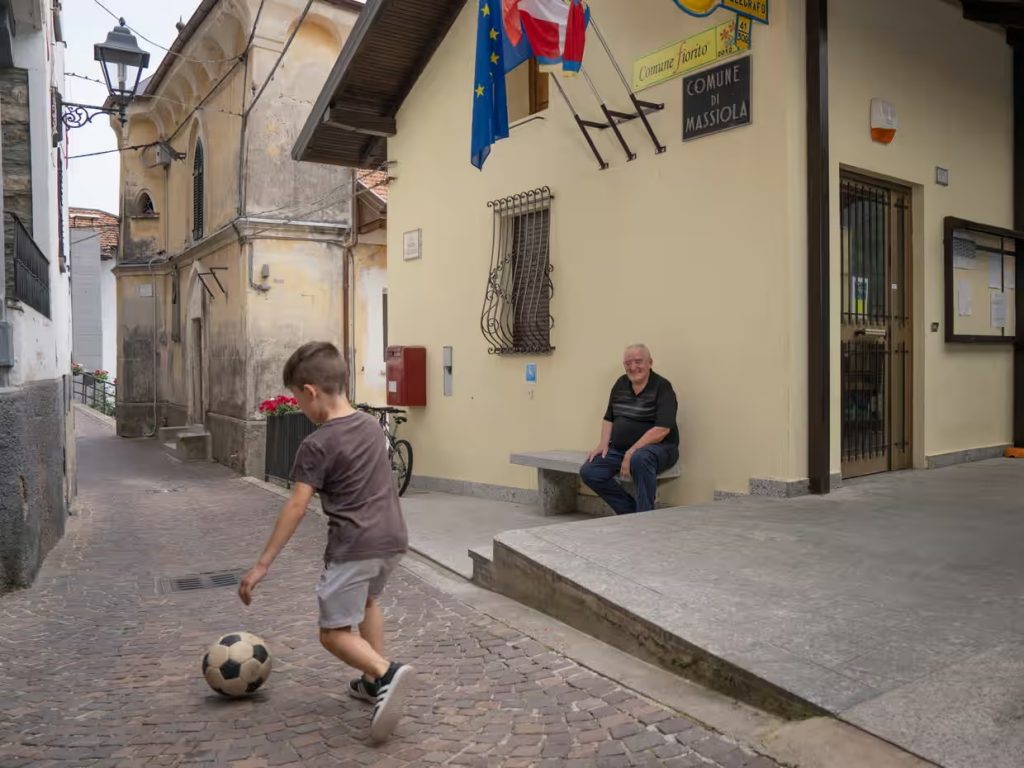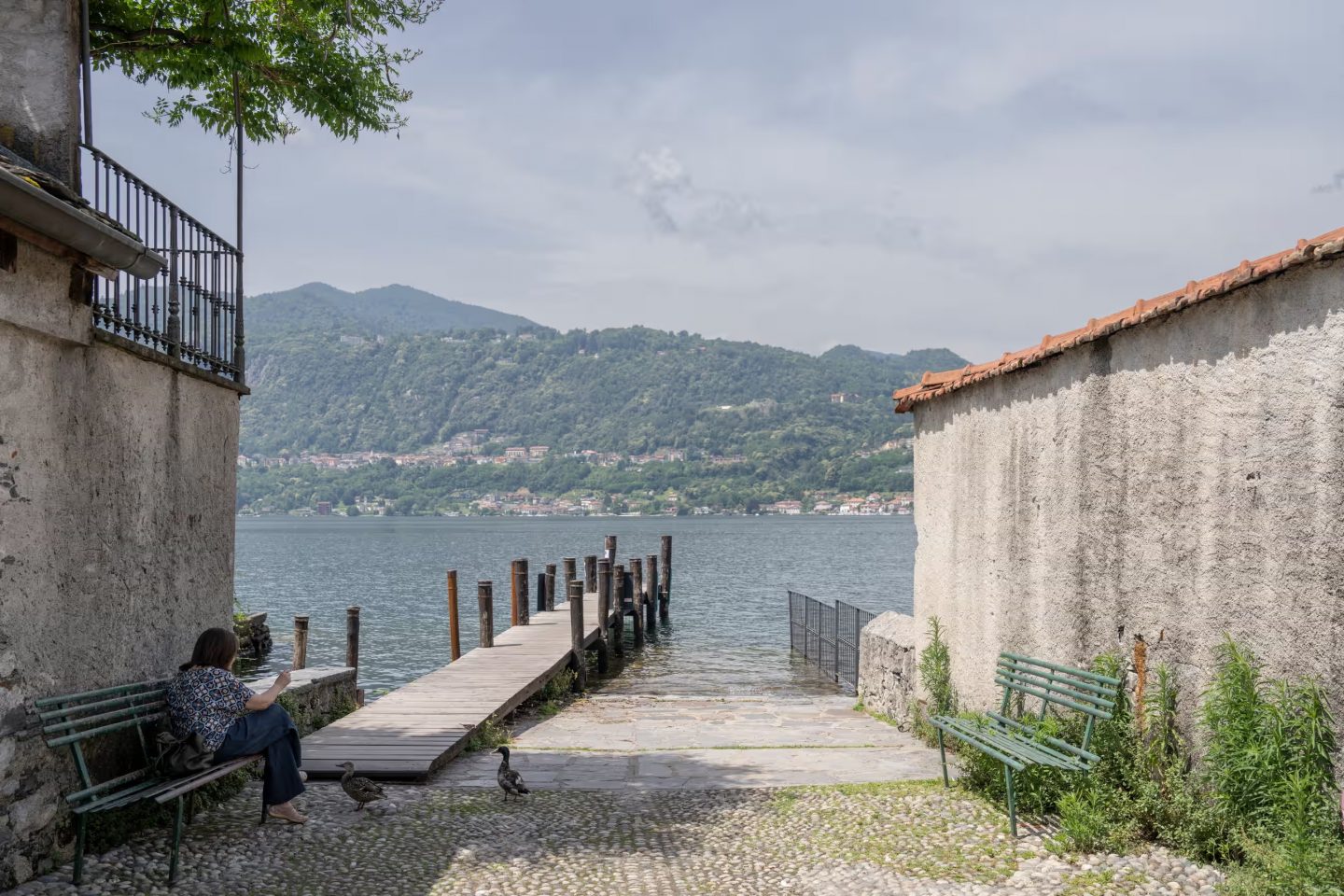Massiola is a village slowly dying, and it’s not the only one. Dwindling populations are affecting the whole of Italy – will this crisis reshape the country’s future?
By Tobias Jones – The Guardian
The black letters painted on the walls – announcing the “hostelry” and the “bar” – are fading to nothing. Both have been closed for decades. There’s no building work going on either: in one garden a cement mixer has been rotated upwards, painted yellow and turned into a plant pot. Many of the houses are empty and have hand-written For Sale signs on their front doors.
This is Massiola, a mountain village 772 metres above sea level, west of Lake Maggiore in the northern Italian region of Piedmont.
It’s a beautiful place. Alleyways snake between houses with terraced gardens. The air smells of manure and woodsmoke. But apart from the crash of the river in the valley below and the clang of distant cowbells, it’s eerily silent.
“There’s no one here any more,” says one old man. No babies have been born since 2015; 23 residents have died. Since the turn of the century the population has dropped from 173 to just 117.
Massiola is slowly dying and it’s easy to see why. It seems better suited to a simpler age: the central road is so narrow, you have to park your car at one end. Phone reception is iffy. In 2020 a landslide crashed through the middle of the village and its last remaining shop. Since then, bread has been left for residents in a cupboard under the arches of the parish church.
It was very different in the first couple of decades after the second world war. With a population of about 350, the village had a sawmill and specialised in making wooden spoons and pins for wine barrels. There was a nearby marble mine, and tin, pewter and aluminium works closer to Omegna, a town farther down the valley.
“It was so different back then,” says Renzo Albertini, 74, the down-to-earth mayor of the village. “In the mid-60s there were two food shops, three bars, the hostelry, 200 sheep. Every family had a cow, most had a pig … ”
But the marble quarry closed in the 60s and the demand for wooden pins and spoons declined. The village school closed in the early 2000s as families slowly migrated down the valley into the larger towns and cities. “No one works the woodlands now,” Albertini says wistfully. “There’s no life here any more.” Without the young, an elderly woman adds, “there’s no future”.
Massiola is a prism through which to see a slow-motion crisis that is affecting the whole of Italy: its “demographic winter”. There was widespread shock in April when figures from Istat, the national statistics agency, revealed that the population of Italy had fallen by 179,000 in 2022, a 0.3% decline. Deaths now far outstrip births which last year, for the first time, fell below 400,000 a year. Shortly after the figures were released, Elon Musk opined that “Italy is disappearing”. According to the educational news site Tuttoscuola, 2,600 Italian primary and infant schools have closed since the 2014-15 academic year. The number of students is constantly falling: it’s predicted in this academic year there will be 127,000 fewer schoolchildren nationally than the previous year.
Demographers consider 2.1 a golden number. That’s the fertility rate, the average number of children born to every woman, that allows a country’s population to remain stable (it’s called “the substitution index”).
Italy’s fertility rate is now 1.24. In certain regions, it’s even lower: in Basilicata, in the south, it’s 1.09 and in Sardinia, 0.95. Every year, Italy’s average age creeps up. It now stands at 46.4 and almost a quarter of Italians are 65 and over.
The traditional population pyramid – with a wide base of youngsters thinning to a point of a few elders – now looks more like an urn; if current trends continue, it will eventually be inverted. Projections suggest Italy’s population will fall from 59 million now to 48 million by 2070, with numbers in the south and islands thinning from 20 to 14 million. Given national pension provisions are like a Ponzi scheme, requiring new contributors to finance those who take money out, this imbalance will become an acute economic problem, requiring either huge tax hikes or drastic pension cuts.

Demographers and sociologists have long been aware of the problem of Italy’s birthrate but it has suddenly become a hot political topic.
Prime minister Giorgia Meloni sees in it an issue that speaks to the gut values of the far right because it appears to confirm a conspiracy theory that Meloni, and her party, repeatedly refer to: “ethnic substitution” or “the great replacement”. In 2017 she said there had been “a planned and desired invasion” of immigrants, and a year later repeated the antisemitic trope that George Soros “finances ethnic substitution”.
The absurd idea that a rich Jew deliberately brings in cheap labour from the developing world to reduce costs, increase profits and undermine Christian values is widely held among politicians in Meloni’s Brothers of Italy party. In April, Francesco Lollobrigida, who is the partner of Meloni’s sister and now minister for agriculture, linked the demographic crisis to this conspiracy theory, saying the issue of births needed to be addressed because “we cannot give in to the idea of ethnic substitution”.
Even the mainstream media stokes this paranoia: Panorama, a current affairs and lifestyle magazine, recently put on its cover various black and brown faces under the title “Italy without Italians”.


